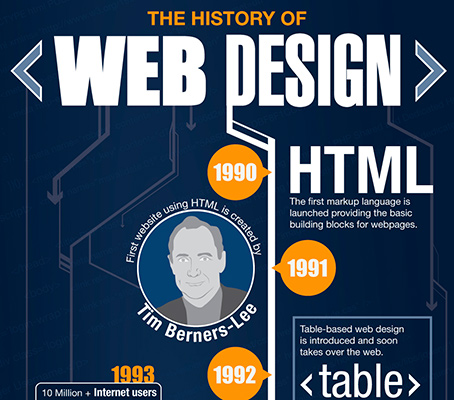The Change Of Online Operatings Systems: A Trip Through Time
The Change Of Online Operatings Systems: A Trip Through Time
Blog Article
Web Content Written By-Asmussen Wong
In the past, web sites were straightforward and concentrated on details. Navigating was straight, and style was for desktops. Now, https://www.forbes.com/sites/forbescommunicationscouncil/2021/12/21/social-medias-important-role-in-creating-long-lasting-digital-connections/ is vital. Information guides designs for easy navigation. Receptive layouts fit different devices. Today, dark setting lowers strain, and minimal food selections improve navigation. Interactive features involve customers, and bold visuals stand out. https://seo-defined19753.vblogetin.com/35479242/improve-your-ppc-projects-with-advanced-keyword-study-strategies-that-will-certainly-change-your-marketing-method-discover-how increases interaction. See exactly how layout has developed to enhance your on-line trip.
Very Early Days of Website Design
In the very early days of website design, simpleness reigned supreme. Internet sites were standard, with restricted colors, font styles, and formats. The emphasis was on giving information rather than fancy visuals. Customers accessed the internet through slow dial-up connections, so rate and capability were essential.
Navigation menus were straightforward, usually situated at the top or side of the web page. Sites were made for home computer, as mobile surfing had not been yet common. Material was king, and developers prioritized easy readability over complicated layout components.
HTML was the main coding language utilized, and designers needed to function within its constraints. Animations and interactive features were minimal compared to today's requirements. Websites were static, with little vibrant content or individualized individual experiences.
Surge of User-Focused Design
With the evolution of web site style, a change in the direction of user-focused design principles has actually come to be significantly noticeable. Today, developing sites that prioritize user experience is important for engaging site visitors and achieving company goals. User-focused design includes comprehending the requirements, choices, and habits of your target market to customize the web site's format, content, and includes appropriately.
Developers now carry out comprehensive study, such as individual surveys and use testing, to gather understandings and comments directly from customers. This data-driven approach aids in producing instinctive navigating, clear calls-to-action, and aesthetically enticing user interfaces that reverberate with visitors. By putting the individual at the center of the style process, web sites can deliver a much more customized and satisfying experience.
Receptive layout has also become a key element of user-focused layout, making sure that sites are enhanced for numerous gadgets and screen sizes. This versatility improves ease of access and usability, satisfying the varied methods individuals connect with web sites today. Basically, the increase of user-focused style represents a change in the direction of creating digital experiences that focus on the needs and assumptions of completion user.
Modern Trends in Web Design
Check out the current fads shaping website design today. One noticeable trend is dark setting layout, providing a sleek and modern look while reducing eye pressure in low-light atmospheres. An additional essential trend is minimal navigating, simplifying food selections and enhancing customer experience by concentrating on essential elements. Integrating micro-interactions, such as computer animated switches or scrolling results, can develop a more engaging and interactive website. Receptive style remains crucial, ensuring smooth individual experiences across different gadgets. Additionally, making use of strong typography and unbalanced formats can include aesthetic passion and draw attention to specific material.
Integrating AI modern technology, like chatbots for consumer support or personalized recommendations, improves user interaction and improves processes. Accessibility has additionally end up being a substantial trend, with developers prioritizing inclusive design practices to satisfy diverse customer demands. https://juliusokezt.yomoblog.com/36194306/by-comprehending-the-differences-between-these-2-seo-methods-businesses-can-produce-an-extra-effective-internet-marketing-plan-that-drives-both-local-and-organic-web-traffic-to-their-site by maximizing site performance for speed and performance is one more arising fad in website design. Working together with customer comments and information analytics to iterate and enhance style constantly is crucial for remaining appropriate in the ever-evolving digital landscape. By embracing these modern trends, you can develop a visually attractive, user-friendly website that resonates with your target market.
Final thought
As you review the advancement of internet site design from the early days to now, you can see exactly how user-focused style has actually come to be the driving force behind modern fads.
Embrace the journey of modification and adaptation in web design, constantly keeping the user experience at the center.
Keep present with the most up to date patterns and modern technologies, and never ever stop evolving your strategy to produce visually spectacular and easy to use sites.
Develop, adjust, and develop - the future of website design is in your hands.
